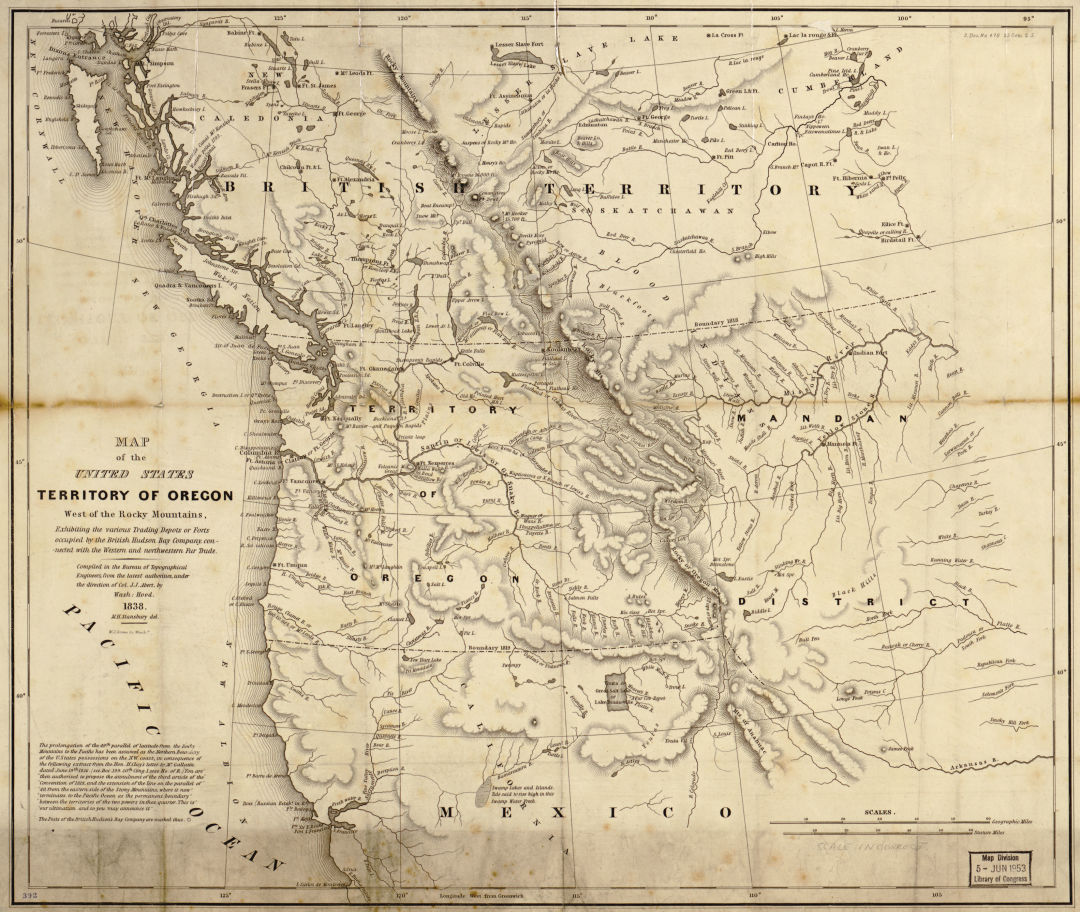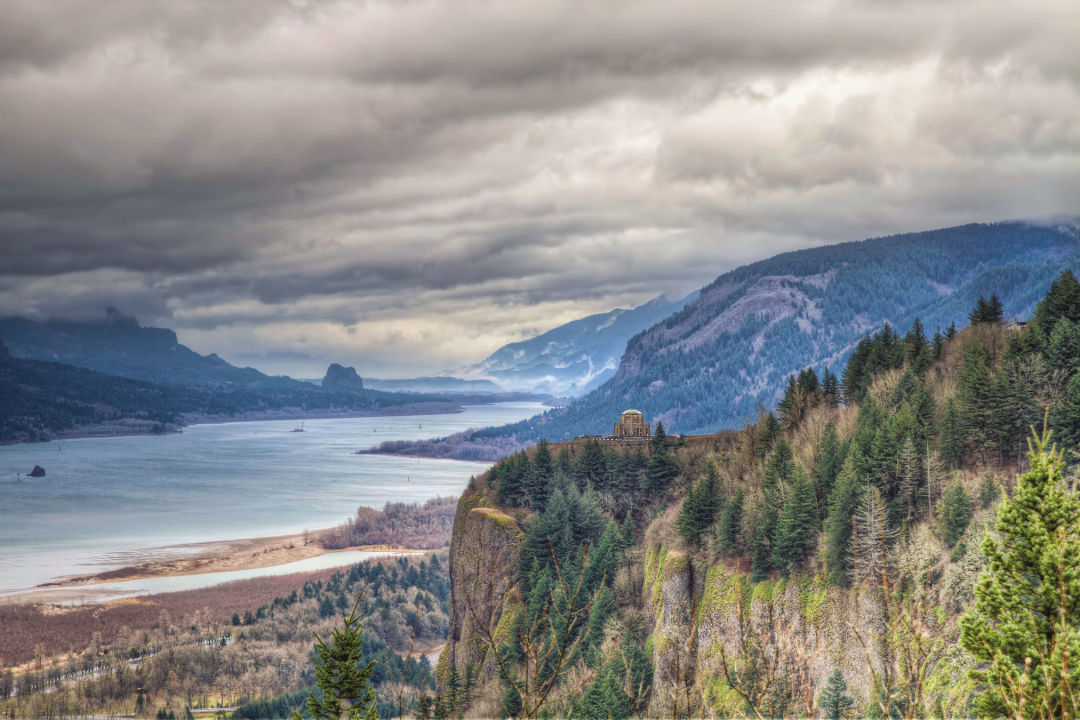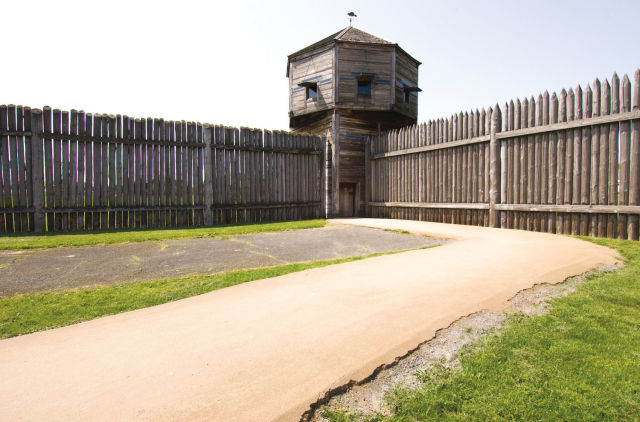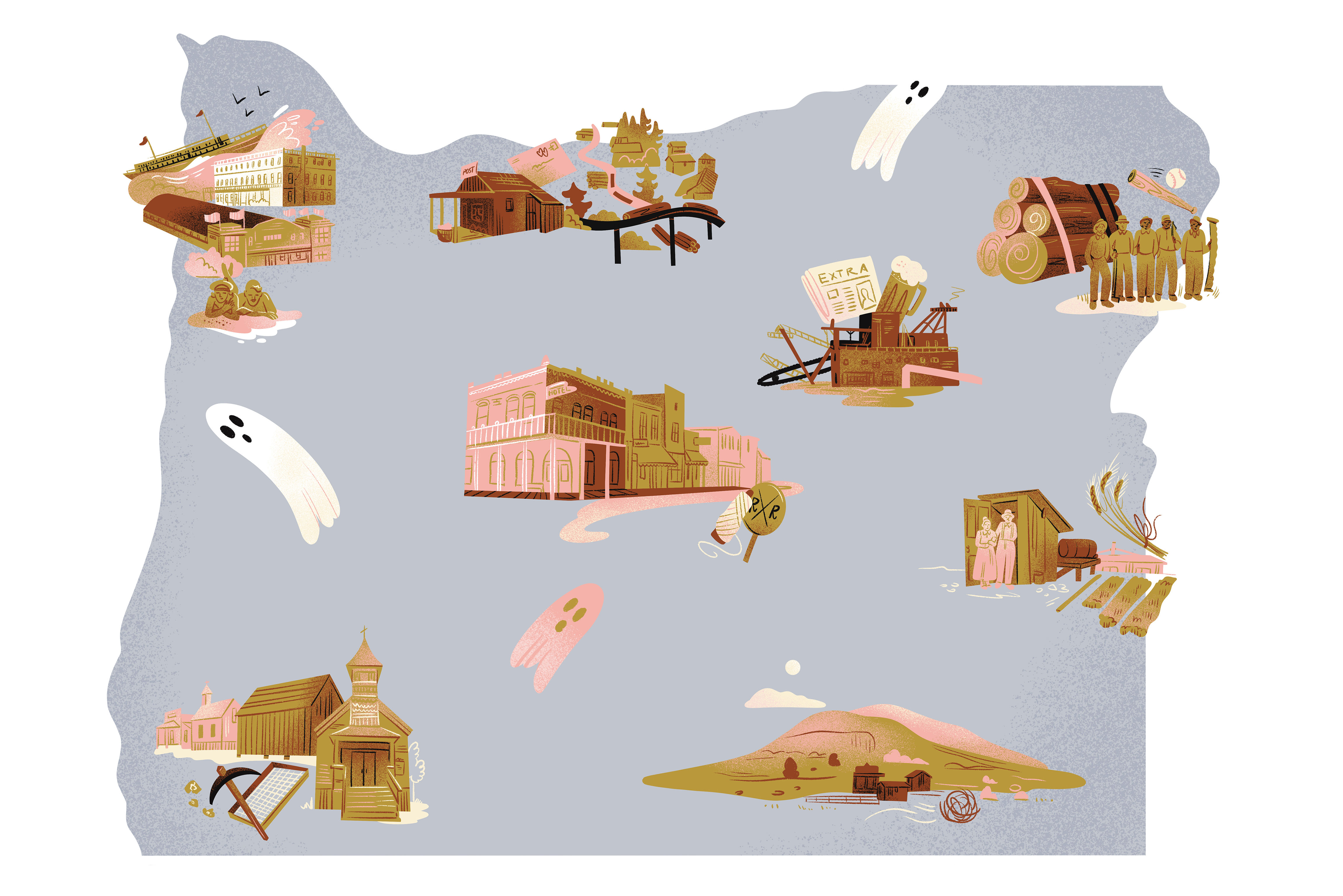Travel Back to 1846, the Year Oregon Became American

"The nation began the year in crisis” ... or so wrote historian Bernard DeVoto, in his classic history 1846: The Year of Decision. Published during World War II, DeVoto’s book portrayed an epic phase of Manifest Destiny unfolding 170 years ago. The vast Oregon Country was formally co-occupied by the US and Great Britain. War loomed as belligerent Americans demanded the whole territory (“54’40 or Fight!”). American settlers were pouring down the Oregon Trail, and had set up a provisional government. Meanwhile, the US had just annexed the Republic of Texas; DeVoto writes that some believed that “coupling Texas with ... Oregon ... would gratify imperialists and pacify abolitionists.” In May, Congress declared war on Mexico. And in June, Americans in California declared the short-lived Bear Flag Republic.
DeVoto’s landmark book wove a sprawling elegy to national expansion, part of a genre of pioneer hagiography. Today’s more skeptical historians still study 1846’s subplots.

What was really happening?
“There’s a temptation to tell it as the unique story of people of substance traveling the Oregon Trail,” says Portland State University historian Katrine Barber, noting that some modern historians see a global pattern of English-speaking migration in Australia, New Zealand, South Africa, and Canada. “All of these places have their own versions of the Oregon Trail story,” Barber says.

Why did the Queen dump us?
British ministers considered US claims to the whole Northwest so much poppycock. (Or maybe balderdash.) But in 1846, Her Majesty’s Government decided that a treaty enshrining a split at the 49th parallel—and giving up future Oregon and Washington—suddenly made sense. Why? One reason: In 1843, the Brits established Fort Victoria, on Vancouver Island—a better oceanic port than Fort Vancouver, the British fur-trading outpost on the treacherous Columbia, just north of present-day Portland.
So—our Vancouver?
The village at Fort Vancouver, run by Britain’s Hudson’s Bay Company, was the biggest town between Yerba Buena (a.k.a. San Francisco) and New Archangel (Sitka, Alaska). “When the fur brigade came in, there’d be 1,000 people,” says Douglas Wilson, the Fort Vancouver National Historic Site’s archaeologist. Post-treaty, the multiethnic settlement was orphaned. “The village came to be seen as affiliated with Britain and the Catholic Church,” Wilson says. Some moved to Victoria; some, to reservations.




